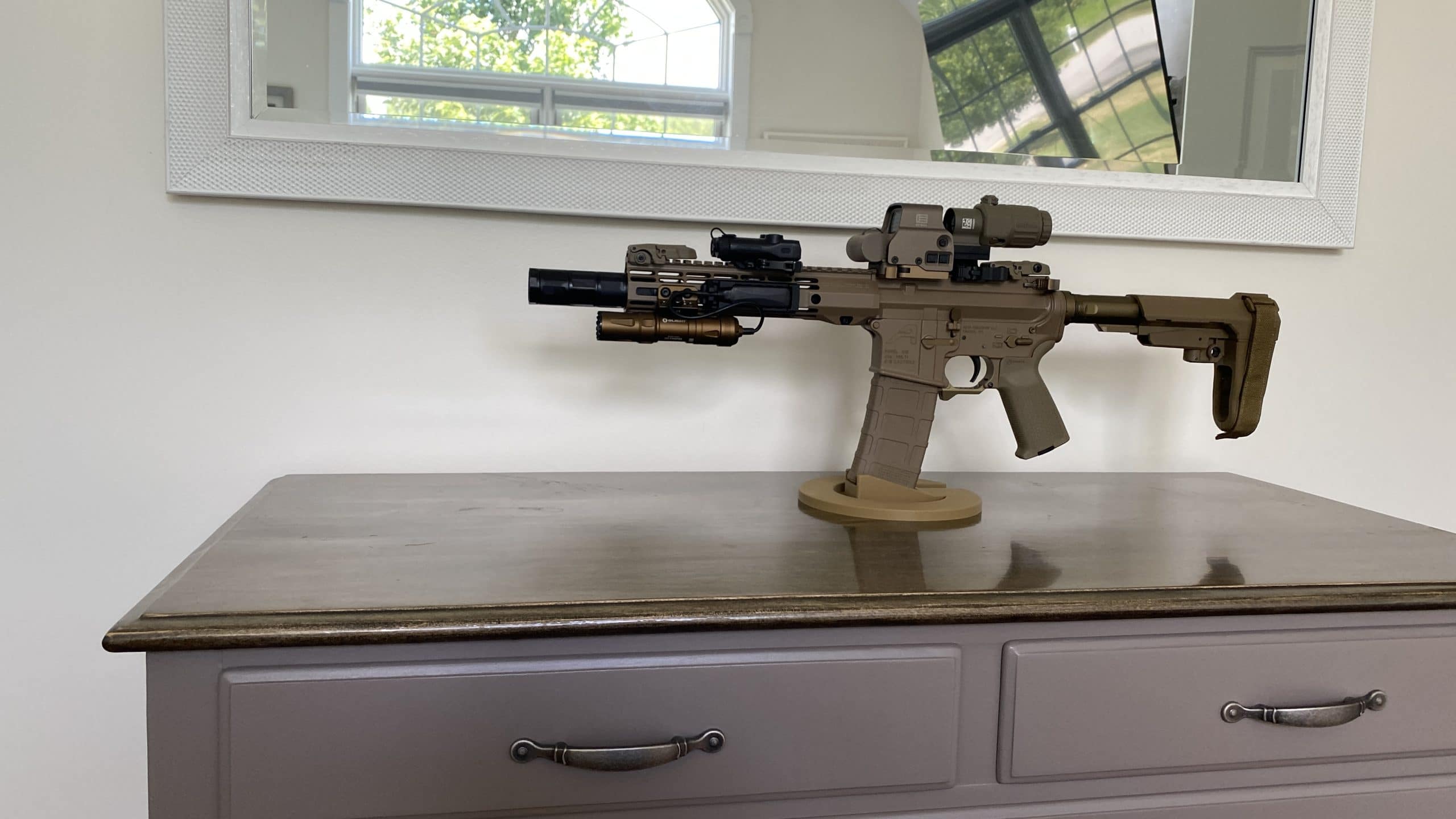
Categories:
Gun ownership comes with great responsibility, and one of the most crucial aspects of responsible gun ownership is ensuring the safe storage of guns. Regardless of whether you are a seasoned gun enthusiast or a new gun owner, understanding how to store guns safely is paramount for the well-being and security of everyone in your household. Safe gun storage not only prevents unauthorized access and potential accidents but also helps deter theft and ensures compliance with legal requirements.
The importance of safe gun storage cannot be overstated. Tragically, numerous incidents involving unintentional injuries or deaths caused by mishandling guns occur each year. By implementing appropriate storage practices, we can significantly reduce these unfortunate occurrences.
This guide aims to provide you with comprehensive knowledge on how to store guns safely, offering valuable insights into various methods that can be employed to secure guns effectively. It will cover essential considerations such as choosing the right type of storage device, understanding legal obligations regarding gun storage in your jurisdiction, practical tips for securing your guns at home or while traveling, and additional precautions for households with children or vulnerable individuals.
By adopting proper gun storage practices outlined in this guide, you will not only safeguard yourself and those around you from potential accidents but also contribute to promoting responsible gun ownership within your community. Remember: safe gun storage is an ethical obligation that goes hand in hand with exercising our Second Amendment rights responsibly.
The importance of safe gun storage cannot be overstated. Responsible gun ownership goes hand in hand with ensuring guns are stored securely when not in use. This crucial practice not only safeguards the lives of individuals, particularly children and unauthorized users, but also helps prevent thefts that could potentially put lethal weapons in the wrong hands. One of the primary reasons for safe gun storage is to protect children from accidental gun injuries or fatalities.
Children are naturally curious, and their lack of understanding regarding the dangers associated with guns makes them particularly vulnerable. Tragic incidents can occur when guns are left unsecured and accessible to children, leading to devastating consequences that can last a lifetime. By securely storing guns, owners minimize the risk of accidents and help create a safer environment for their families. Another significant aspect is preventing unauthorized access to guns.
Guns falling into the hands of criminals or individuals who may pose a threat to society can have dire consequences. Properly securing guns through methods such as locked cabinets, safes, or trigger locks prevents unauthorized access and reduces the likelihood of stolen guns being used for criminal activities. Moreover, responsible gun storage plays a vital role in ensuring community safety by reducing gun thefts.
Stolen guns often find their way into illegal markets, supplying criminals with dangerous weapons that fuel violence and crime rates. By storing guns securely, gun owners actively contribute to minimizing these risks by making it more challenging for thieves to access their weapons.
When it comes to storing guns safely, investing in a high-quality gun safe is paramount. A gun safe not only provides a secure storage solution but also ensures that your guns are protected from theft, unauthorized access, and potential accidents. However, selecting the right gun safe requires careful consideration of several factors. Firstly, consider the size and capacity of the gun safe.
It should be spacious enough to accommodate all your guns and any additional accessories like scopes or ammunition. Moreover, you may want to anticipate future acquisitions and opt for a larger safe accordingly. Additionally, ensure that the chosen safe meets or exceeds industry standards for gun storage. Next, evaluate the construction and materials used in manufacturing the gun safe. Look for safes made from heavy-duty steel with reinforced doors and hinges as they provide enhanced security against forced entry or tampering attempts.
The thickness of the steel should be substantial enough to withstand potential attacks effectively. Another vital aspect is fire protection capability. Opt for a gun safe that offers fire resistance by checking its fire rating certifications provided by independent testing agencies. A good fire-rated safe should protect your guns from heat damage during household fires. Consider the locking mechanism as well: electronic locks offer convenience while traditional mechanical combination locks can provide reliability over time.
Biometric fingerprint scanners are also gaining popularity due to their advanced security features.
When it comes to safely storing guns, it is crucial to have a comprehensive understanding of the local laws and regulations pertaining to gun ownership and storage in your area. Different jurisdictions may have varying requirements, so it is important to familiarize yourself with the specific guidelines applicable to your location. One of the primary reasons for understanding local laws is compliance.
By adhering to these regulations, you not only ensure that you are legally storing your guns but also contribute to overall public safety. Ignorance of the law is not a valid defense if you are found to be non-compliant. Local laws often outline specific storage requirements, such as mandating the use of gun safes or lockboxes for gun storage. These measures are designed to prevent unauthorized access and reduce the risk of theft or accidental discharge.
Understanding these regulations allows you to make informed decisions about the appropriate security measures needed for your guns. Additionally, local laws may also provide information on transportation rules for guns. Some jurisdictions require guns to be unloaded and locked in a case during transport, while others may have additional restrictions or specifications regarding how they should be carried in vehicles. To ensure compliance with local laws and regulations concerning gun storage, it is essential that you research and consult reliable sources such as government websites or local law enforcement agencies.
They can provide accurate and up-to-date information on any recent changes or additions in legislation that could affect how you store your guns safely within your locality.
One of the most effective ways to ensure the safe storage of guns is by utilizing locking devices. These devices provide an added layer of security and prevent unauthorized access to your guns, reducing the risk of accidents, theft, or misuse. There are various types of locking devices available that cater to different storage needs and preferences. One commonly used locking device is a gun safe.
These safes are designed specifically for guns and provide secure storage while allowing quick access when needed. Gun safes are typically made from heavy-duty materials like steel and feature robust locking mechanisms, such as combination locks or biometric scanners. They offer protection against theft, fire, and unauthorized handling. For those who require more portable storage options, cable locks or trigger locks are ideal choices.
Cable locks consist of a strong steel cable that can be threaded through the action or magazine well of a gun, rendering it inoperable. Trigger locks attach directly to the gun’s trigger guard and prevent it from being pulled. Locking devices not only serve as physical barriers but also act as visual deterrents. By visibly securing your guns with these devices, you send a clear message to others that safety is a top priority in your household.
When using locking devices, it is crucial to store ammunition separately from guns for enhanced safety. This prevents accidental discharge in case someone gains access to the gun but cannot find ammunition readily available.
When it comes to storing guns safely, one crucial aspect to consider is the separation of ammunition from guns. Keeping ammunition separate from your guns can greatly reduce the risk of accidents, unauthorized access, and potential harm. Here are some important points to keep in mind:
1. Store ammunition in a secure location: Invest in a sturdy lockable box or cabinet specifically designed for storing ammunition. Ensure it is kept away from children or individuals who should not have access to guns. 2. Keep ammunition locked separately: It is essential to store your ammunition separately from your guns. This prevents any accidental discharge or unauthorized use of the gun when not under direct supervision.
3. Consider climate-controlled storage: Extreme temperatures and humidity can negatively impact the quality and performance of ammunition over time. To maintain its reliability, store your ammunition in a cool, dry place away from direct sunlight. 4. Label and organize: Properly label all containers used for storing ammunition, including calibers and types of rounds inside each box or magazine. This labeling system will help you quickly identify and select the appropriate rounds when needed.
5. Education on safe handling: Educate yourself about safe handling practices for both guns and ammunition. Learn about proper storage procedures, as well as how to identify signs of deterioration or damage that could compromise safety.
Ensuring the safe storage of guns is paramount for every responsible gun owner. Whether you own guns for protection, hunting, or sport shooting, taking precautions to securely store them is essential to prevent accidents and unauthorized access. Here are some key guidelines for properly storing guns in a home setting. 1. Invest in a quality gun safe: The most secure method of storing guns at home is by using a sturdy and reliable gun safe.
Opt for a well-built model that meets industry standards and provides adequate protection against theft, fire, and unauthorized access. 2. Locking mechanisms: Ensure your guns are equipped with reliable locking mechanisms such as trigger locks or cable locks. These additional safety measures can prevent accidental discharges or unauthorized use. 3. Separate ammunition storage: Store ammunition separately from your guns in locked containers or safes.
This helps reduce the risk of accidental discharge and restricts access to loaded guns. 4. Disassemble when necessary: If you have long guns or rifles that can be easily disassembled without compromising their functionality, consider breaking them down into separate parts when not in use. This makes it more challenging for unauthorized individuals to use them without your knowledge. 5. Accessibility for authorized users only: While it’s crucial to keep guns secure, ensure they are accessible to authorized users when needed by using biometric safes or combination locks that can be quickly accessed during emergencies.
When it comes to transporting guns, it is crucial to prioritize safety and security. Whether you are going to the shooting range, traveling for hunting purposes, or simply moving your guns from one location to another, following proper guidelines is essential. Ensuring the safe transportation of guns not only protects yourself but also prevents any potential accidents or unauthorized access. Here are some key considerations for transporting guns safely:
1. Unloaded and Locked: Before transporting guns, always ensure they are unloaded and double-check that there is no ammunition in the chamber or magazine. Locking the gun in a secure case adds an extra layer of protection. This prevents any accidental discharge during transportation. 2. Separate Ammunition: Store ammunition separately from guns during transportation. Keeping them apart reduces the risk of accidental loading or discharge.
3. Use a Locked Trunk or Dedicated Storage Area: If you are using a vehicle for transportation, place your gun in a locked trunk or a dedicated storage area like a gun safe within your car. This ensures that unauthorized individuals cannot access your gun while you are away from your vehicle. 4. Keep It Discreet: When transporting guns outside of your vehicle, use discreet cases that do not draw attention to their contents.
Avoid advertising that you are carrying guns as it may attract unwanted attention. 5.
Ensuring the safe storage of guns is crucial, especially when children or visitors are present in your home. Implementing appropriate measures can significantly minimize the risk of accidents or unauthorized access to guns. Here are some essential guidelines to maintain gun security in the presence of children or visitors:
1. Secure Storage: Store guns securely in a locked container, such as a gun safe or lockbox. This prevents easy access by unauthorized individuals and ensures that only authorized users can retrieve them. 2. Proper Ammunition Storage: Keep ammunition separate from guns and store it securely as well. Consider using a separate locked container for ammunition to further enhance safety. 3.
Education and Communication: Educate your children about gun safety from an early age, emphasizing that guns are not toys and should never be touched without adult supervision. Additionally, communicate with visitors about your gun storage procedures and expectations to ensure everyone is aware of the importance of responsible gun handling. 4. Continuous Supervision: When children or visitors are around, make sure guns are always under direct adult supervision.
Never leave guns unattended, even momentarily. 5. Trigger Locks and Cable Locks: Utilize trigger locks or cable locks on guns when they are not in use to prevent them from being fired accidentally. 6.
Properly maintaining and regularly inspecting your gun storage equipment is crucial to ensure the safety and security of your guns. By following a few simple steps, you can prolong the lifespan of your storage equipment, prevent malfunctions, and ensure that your guns are always stored securely. Firstly, it is essential to clean your gun safe or cabinet on a regular basis.
Dust, dirt, and moisture can accumulate over time, potentially causing damage to both the equipment and guns. Use a soft cloth or brush to remove any dust or debris from the surfaces and corners of your storage unit. Additionally, consider using a mild cleaning solution specifically designed for gun safes or cabinets to maintain cleanliness. Next, inspect the locking mechanism of your storage equipment regularly.
Ensure that all locking bolts are functioning correctly by testing the lock’s operation periodically. Lubricate any moving parts as recommended by the manufacturer to prevent rusting or jamming. Check for signs of wear or damage in other components such as hinges, door seals, or electronic keypads if applicable. Damaged parts may compromise both security and fire protection capabilities if left unattended.
Replace any worn-out parts promptly according to manufacturer guidelines. Furthermore, pay attention to environmental factors that may affect your gun storage equipment. Extreme temperatures and humidity levels can cause deterioration over time. Consider using dehumidifiers or silica gel packs inside your safe to absorb excess moisture effectively.
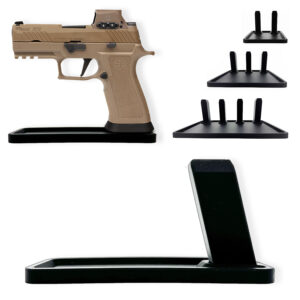
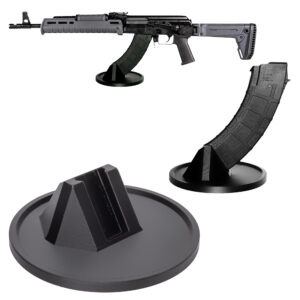


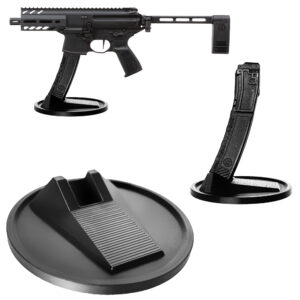

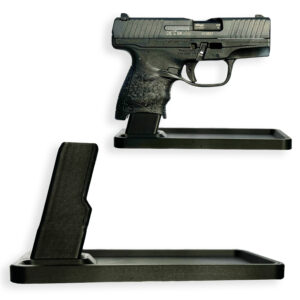

Colt
Colt M4 Carbine
Colt LE6920
Colt AR-15 A4
Daniel Defense
DDM4 V7
DDM4 V9
DDM4 V11
DDM4 ISR (Integrally Suppressed Rifle)
Smith & Wesson (S&W)
M&P15 Sport II
M&P15 Tactical
M&P15T
Bravo Company Manufacturing (BCM)
BCM Recce-16
BCM Recce-14
BCM MCMR Series
Aero Precision
M4E1 Series
AC-15
AR15 Pistol (Various Configurations)
Ruger
Ruger AR-556
Ruger SR-556
Ruger AR-556 MPR (Multi-Purpose Rifle)
Springfield Armory
Saint Victor
Saint Edge
Saint AR-15
PSA (Palmetto State Armory)
PSA PA-15
PSA AR-V
PSA Jakl (AR Pistol)
FN America
FN 15 Tactical Carbine
FN 15 Patrol
FN 15 DMR
Wilson Combat
Recon Tactical
Super Sniper
Protector Carbine
SIG Sauer
SIG M400 Tread
SIG M400 Elite
SIG M400 SDI
LWRC International
IC DI (Direct Impingement)
IC SPR
IC A5
Bushmaster Guns
XM-15 QRC
Bushmaster MOE
XM-15 Patrolman
Rock River Arms
LAR-15 Entry Tactical
LAR-15 Predator
LAR-15 Elite Comp
Stag Arms
Stag 15 Tactical
Stag 15L (Left-Handed Models)
Stag 15 Valkyrie
Noveske Rifleworks
Noveske Gen 4 N4
Noveske Space Invader (AR Pistol)
Noveske Recon
Anderson Manufacturing
AM-15 Optic Ready
AM-15 M4 Carbine
AM-15 Precision Rifle
Adams Arms
AA-15 Piston Rifle
P2 AARS (Adams Arms Rifle Series)
Black Rain Ordnance
SPEC15 Series
BRO Predator
Fallout 15
Diamondback Guns
DB15 Series
DB15CCMLB
DB15EB
Del-Ton Inc.
DTI-15
Del-Ton Echo 316H
Sierra 316M
Windham Weaponry
Windham SRC
Windham VEX-SS
Windham RMCS-4 (Caliber Conversion System)
Christensen Arms
CA-15 G2
CA-15 Recon
CA-15 Titanium Edition
Patriot Ordnance Factory (POF-USA)
Renegade Plus
P415 Edge
Revolution DI
LaRue Tactical
PredatAR
OBR (Optimized Battle Rifle)
LaRue Stealth 2.0
Battle Arms Development
Workhorse Patrol Carbine
BAD556-LW (Lightweight)
Authority Elite Rifle
Faxon Guns
Ascent AR-15
FX-19 (AR Pistol)
Streamline Ultralight Series
KE Arms
KE-15 SLT (Super Lightweight Tactical)
KE-15 Scout Carbine
Primary Weapons Systems (PWS)
MK1 MOD 2-M
MK116 PRO
MK107 (Piston AR Pistol)
ZEV Technologies
ZEV Core Elite Rifle
ZEV AR15 Billet Rifles
Franklin Armory
BFSIII AR-C1
Militia Model
F17-L (Chambered in .17 WSM)
Seekins Precision
SP15 DMR
NX15 Skeletonized Rifle
Havak Bravo
Aero Precision (Additional Models)
EPC-9 (Pistol Caliber ARs)
VG6 AR Rifles
Barrett Guns
REC7 DI
REC7 Gen II
CMMG
MK4 RCE
Resolute 300
Banshee (AR Pistol)
DPMS Panther Arms
Panther Oracle
Panther LR-308
H&K (Heckler & Koch)
HK MR556A1
HK416 (Military Variant)
Rock Island Armory (Armscor)
VR-80 Tactical AR (Shotgun AR Platform)
Troy Industries
Troy SPC-A3
Troy PAR (Pump Action AR)
Wilson Tactical
Tactical Recon AR
Protector Series
F1 Guns
FDR-15 Skeletonized Rifle
BDRx-15 Series
Juggernaut Tactical
JT-15
JT-10 Precision Rifle
AeroSurplus
Surplus AR-15 Rifles (Budget Models)
Thunder Tactical
AR-15 Basic Carbine
Tactical Builder Sets
Radical Guns
RF-15
Forged AR-Series
Dark Storm Industries
DS-15 Featureless Rifles
DS-10 Typhoon
DRD Tactical
Paratus
Aptus AR Rifles
Bear Creek Arsenal
BCA-15
AR Complete Upper Builds
Aero Survival Rifles (ASI)
ASR Tactical Series
Tactical Edge
WARFIGHTER Series
AR-15 Lightweight Rifles
Lone Star Armory
TX15 DMR
TX15 Carbine
HERA Arms
HERA H7
HERA AR-15 Lower Builds
IWI (Israeli Weapon Industries)
Zion-15
DRD Tactical
Tactical Modular Rifles
Quick-Takedown Rifles
V Seven Weapons
1776 Rifle
Hyperlite Rifle
Core Rifle Systems
Core15 Tac III
Core15 Patrol Rifle
Armalite (Original AR-15 Creator)
M15 Tactical
M15 A4 Carbine
DEF15 (Defensive Sporting Rifle Series)
PSA (Palmetto State Armory Additional Models)
PSAK-47 Hybrid (AR-AK Style Hybrid)
PSA Dagger (Pistol Caliber Configurations)
Odin Works
OTR-15
Odin Recon Rifle
Maxim Defense
MDX-508 PDX (Compact AR Pistol)
MDX-510 Rifle